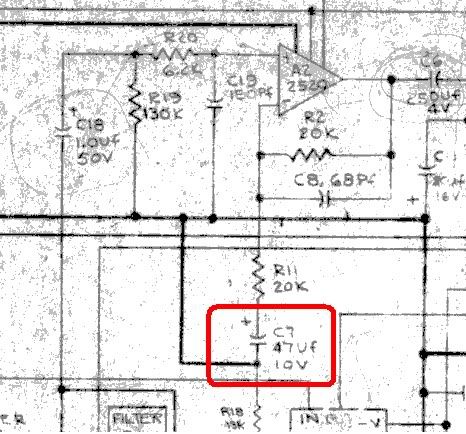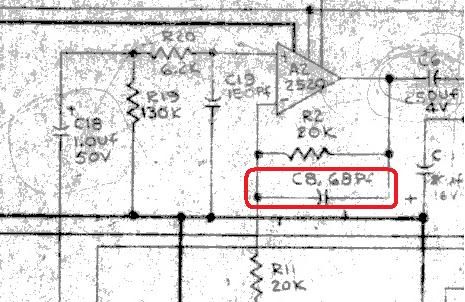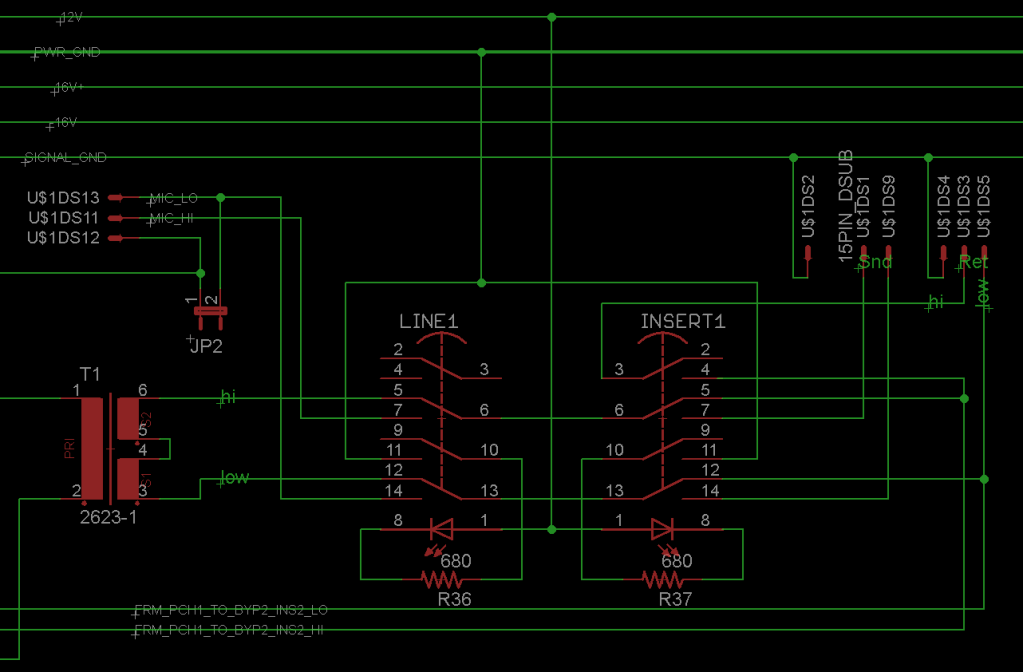So Nickos, what did you decide to do? Perhaps you can keep your mixer unbalanced, and bypass the line receivers in the 7800, going direct to the ACA within it...
BTW I plan on resurrecting this thread; I'm finding a little time to come back to this project. Currently I'm relearning everything I did last year, and going over signal flow of my schematics. I already found some mistakes I missed before, so that's good!

Something else of issue, I'm using lit switches where one of the poles is dedicated to led gnd. That leaves me three poles for a send bypass*.
Since signal is coming from (depending on the mic/line switch) either from a line driven 2623 TX, or a slot 1 Mic pre TX, the signal will be balanced. With the 3 available poles on the switch I can drop the Cold and Hot of the send entirely but only half of the return (see picture), or all of the return and half the send. What I'd like to know which is the better solution or if there is an even better solution I have not imagined?
*(Is the need for a bypass switch silly? I'm just thinking I'd rather not have the sends ALWAYS run out of the input cards, down six-ish feet of the mixer to the patch panel, normalled loopback to run all the way back to the input cards. I mean I want the option to insert stuff, but I'd also like to bypass all that wire whenever possible. If I don't need an insert, the hard bypass would keep the signal inches from the tx of slot 1 to the input of slot 2.)






































